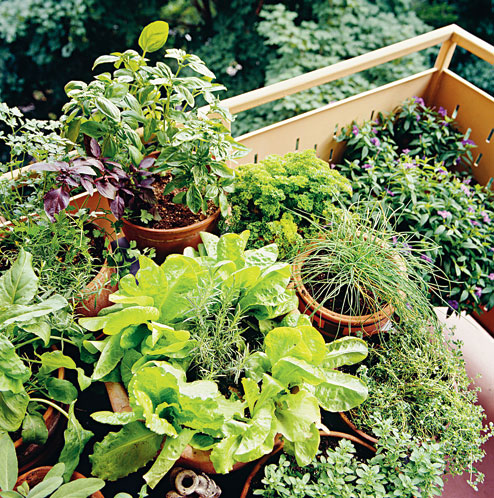No garden is complete without a few herbs. They are prized for their culinary uses, make decorative plants and are worth growing for their aroma alone.

Herbs are used fresh, unlike spices which are always dried or prepared in some other way. To a botanist, a herb is a plant that does not have a permanent woody stem; that is not a tree or shrub. But others define it differently. To them a herb is a plant that has culinary or curative uses, so the range is wide.
Mainly used to add flavour and delight to food, a few herbs have spectacular flowers and are graced by attractive foliage and scent. Their fragrance is hard to resist and their nectar-filled flowers tempt bees and butterflies.

Herbs include not just herbaceous plants but also annuals, perennials, shrubs and trees. For thousands of years they have been used for flavouring and preserving food and in making medicines and toiletries. In the early years herbs were grown for use as medicinal plants — indicated by the species name officinalis, such as Asparagus officinalis.
Monks would grow them safely inside monastery walls in neat rectangular beds, meticulously categorised and labelled. The tradition of herb-grown in ordered bed has survived to the present day because many of them are neat, low-growing plants.
In a modern garden growing herbs in patterned beds is not only visually attractive but also practical as small beds separated by low hedges, paths or stepping stones make it easier to tend to and harvest them.

If there is space it is worth creating a separate herb garden and growing many different herbs together. This would make a strong impact and one would enjoy their combined scents together. However, herbs will find a place in any style of garden and the range of possibilities is enormous. For instance, they can be grown among other ornamental plants in a mixed border. This is useful in cases where there is no space for a separate herb garden or for herbs that are border plants in their own right such as Rue, Chicory, Mint etc.
Fill any gap in borders with colourful dwarf annuals. Planting aromatic herbs next to doorways, paths and seats makes it easy to enjoy their scents to the full. Low-spreading herbs such as Thyme and Creeping Savory are suitable for rock gardens.

For culinary herbs that are used in large quantities such as Coriander, Aniseed, Basil and Parsley the vegetable plot may be the best site. This would be the most convenient for fast growing herbs such as Dill and Chervil too. The herbs may be grown in straight rows among the vegetables or as an ornamental border around the edge of the vegetable garden.
Planting herbs in the gaps between paving stones is an attractive option too. You can create a dedicated herb garden in a paved area of your existing garden by creating square beds. If you lack space you can create a herb garden in containers or even one in a window box.
In this following editions we shall discus how to design a herb garden and how to grow some common herbs.
• To be continued
Do you grow any herbs in your garden?
Write to The Telegraph Salt Lake, 6, Prafulla Sarkar Street, Calcutta 700001. Email: saltlake@abpmail.com










